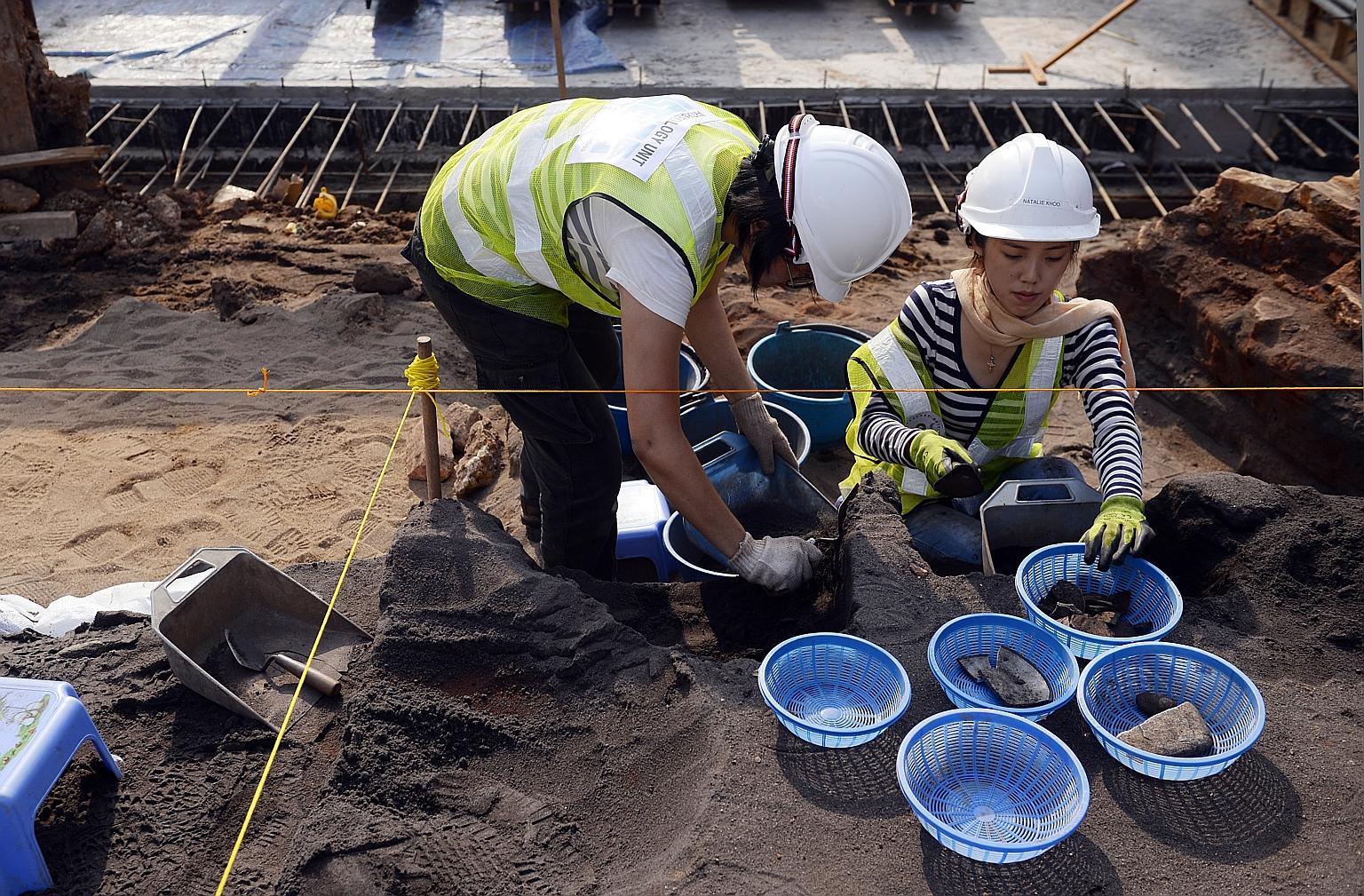Parliament
Study to plug gaps in laws on archaeology
One aspect of NHB review involves legal ownership status of artefacts found on private land
Sign up now: Get ST's newsletters delivered to your inbox

An excavation site in front of Victoria Theatre and Victoria Concert Hall last year. Members of the heritage community welcomed the archaeology review, noting that digs here have grown in scale and regularity since the first excavation at Fort Canning Park in 1984.
ST PHOTO: MARK CHEONG
Melody Zaccheus
Follow topic:
A study on archaeology in Singapore is under way to address gaps in laws and regulations in the field.
One area that is being studied is the legal ownership status of archaeological materials unearthed on private land.
Currently, the authorities do not own such items, as only archaeological finds unearthed on state land belong to the state.
The study is conducted by the National Heritage Board (NHB), Minister for Culture, Community and Youth Grace Fu told Parliament yesterday.
She was replying to Non-Constituency MP Daniel Goh, from the Workers' Party, who asked if artefacts excavated in the past five years have been documented properly and reported to the Government.
NHB said yesterday that it had no further details when The Straits Times asked for information on the scope and timeline of the study.
However, it said the board "will work closely with partners such as the Iseas-Yusof Ishak Institute on this, and will also seek the views of our heritage advisory panel and other relevant stakeholders".
Dr Goh, a sociologist at the National University of Singapore, also raised the issue of the fate of archaeological finds discovered in territorial waters or when people discover artefacts during the construction and renovation of their properties.
He asked whether the ministry would consider "imposing legal obligations for stopping work and reporting the finds to the Government".
Ms Fu replied that when commissioning archaeological excavations, NHB requires the agencies doing them to document and submit reports on the finds to the board.
Materials from these digs that support efforts to interpret Singapore's history are also taken into the NHB-managed national collection.
They are documented and conserved at the Heritage Conservation Centre, when not on display. The remaining artefacts may be stored by partner agencies like the Iseas-Yusof Ishak Institute, which is home to Singapore's sole archaeological unit.
On maritime archaeological finds, Ms Fu said these fall under the Maritime and Port Authority of Singapore through the Merchant Shipping Act, and NHB works closely with the authority on them.
As for findings on private land, she said NHB works with stakeholders to identify and protect important artefacts.
Citing artefacts found on the grounds of the Cathedral of the Good Shepherd in Queen Street, she said several are on display at the cathedral's heritage and resource gallery and at the NHB-run Indian Heritage Centre.
Members of the heritage community, in welcoming the news, said the review is "long overdue".
They pointed out that digs here have grown in scale and regularity since the first excavation at Fort Canning Park in 1984. For instance, an NHB-organised excavation in Empress Place last year resulted in the largest archaeological haul in Singapore in 31 years.
Singapore Management University heritage law expert Jack Lee said a modern and comprehensive legal framework is in order to clarify ownership issues.
For instance, some 600 World War II artefacts from a recently concluded seven-year archaeological study of Adam Park are in the hands of private firm Singapore History Consultants, although they were dug up on state land.
He also suggested, among other things, defining the categories of unearthed finds that the public and developers must report to the state.
He added that people should have to apply to the authorities for permits before they can dig in areas likely to have archaeological relics.
"If people can dig without permission, sites can be damaged," he said. "The context of how an artefact is found is important in archaeology."
Dogged by scant resources and lack of interest for years, archaeologists have also asked for greater government investment to pay for more staff and activities. Also on experts' wishlist: standard operating procedures on how to handle, store and protect artefacts.
Dr Terence Chong, head of Nalanda-Sriwijaya Centre at the Iseas-Yusof Ishak Institute, said the review and a strong legal framework will help the centre and local archaeologists in future excavations.
Ms Fu added that the aim of the authorities, in looking at improving laws and regulations, is not to discourage people from taking an interest in archaeology, but to encourage them to cooperate with NHB.
"Ultimately, we share the same common purpose to understand the history of Singapore through archaeology, and that history is really for the public, present and future generations, to appreciate."

